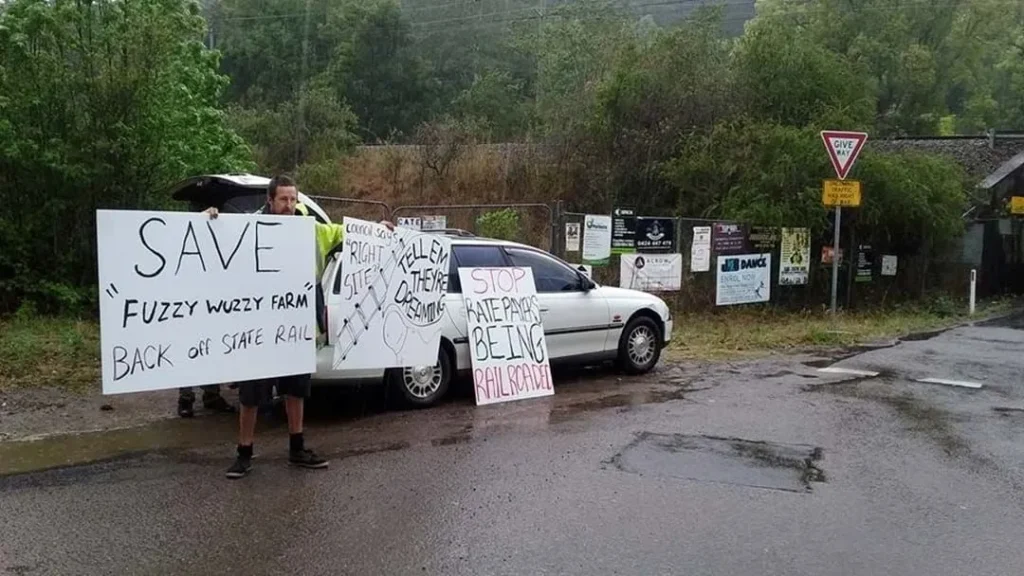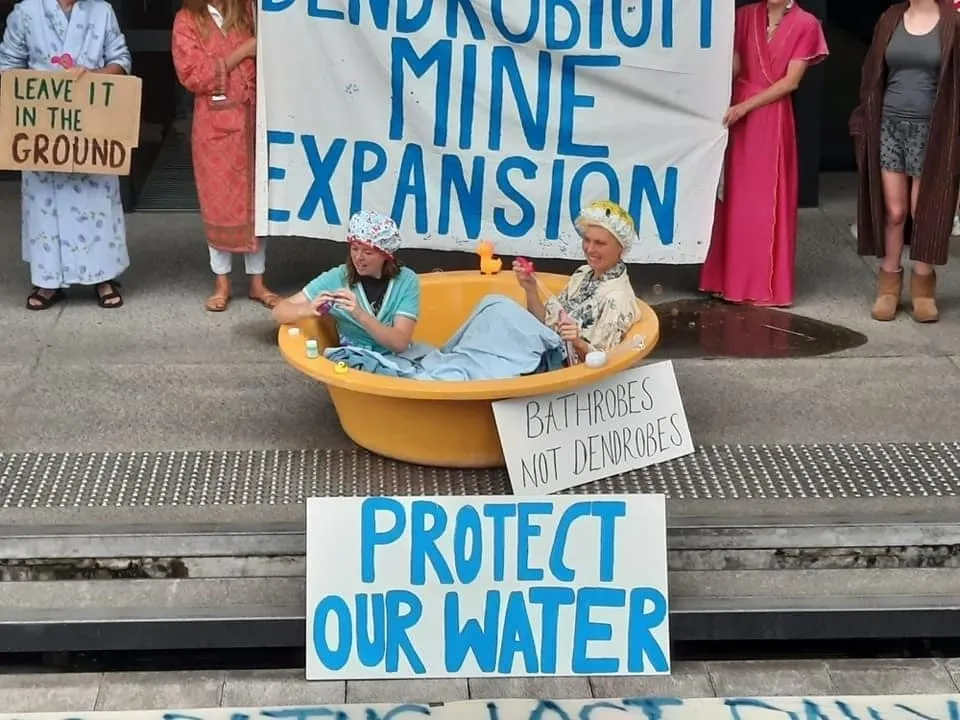
The scathing NSW Audit Office report into the state government’s Biodiversity Offsets Scheme chronicles exactly how the scheme has failed to protect nature and benefited developers.
The scheme failed to meet 96 per cent of developer demand for species credits and 97 per cent of species credits have never been traded on the ‘biodiversity market’. Meanwhile only 60 per cent of the 226 Biodiversity Stewardship sites are being actively managed.
Developers have paid $90 million into the Biodiversity Conservation Fund which sounds good but it means the habitat they’ve destroyed hasn’t been offset with conservation of anything equivalent and only 20 per cent of that $90 million has been acquitted.
There are not enough credits available for at least seven endangered flora species, three endangered fauna species and eight threatened ecological communities but credit demand will grow, particularly when the state government’s $113 billion infrastructure pipeline is considered.
Nature Conservation Council CEO Jacqui Mumford responded to the report by calling for the NSW Government to “end the developer free-for all and strictly limit the use of biodiversity offset as a last resort only”.
“It is hard to imagine a more damning assessment of such an important scheme than the Auditor General has given the NSW Government’s Biodiversity Offsets Scheme today,” Mumford said.
“It is failure by almost every measure. Essentially, the government’s biodiversity offsets scheme treats nature like a Magic Pudding that developers can keep eating forever if they throw some cash into the government’s tin.
“It reduces nature to a bunch of financial formulas that can never capture the true value of our unique and rapidly disappearing wildlife and bushland.
“After this report, offsets must be only used as an absolute last resort. Currently, they are handed out like lollies.”
The conservation movement from the very start opposed the offsets scheme, which part of a package weakened nature laws government introduced in 2017.
“Biodiversity offsets underpin the whole system of new nature laws the Coalition introduced in 2017,” Ms Mumford said.
“The Coalition claimed those new laws would hit the sweet spot — protecting wildlife while allowing development. The truth is, nature has gone backwards since the scheme began.
“The most recent NSW State of the Environment Report found more than 1,020 plants and animals are now threatened with extinction, about 20 more than when the scheme began.
“Offsetting must be used as a last resort and only when it adheres to best-practice principles.”
Best practice principles include:
1. Adhering to the avoid, minimise, offset hierarchy.
2. Requiring no net loss, and preferably a net gain, in biodiversity.
3. Ruling out destruction of high-conversation value habitats.
4. Requiring strict like-for-like offsetting, with no variation rules.
5. Excluding supplementary measures, mine rehabilitation and payments in lieu of offsets.
6. Ensuring all offset actions are additional to what is already required by law.
Key findings
Key findings of the report included:
* Core elements of the scheme are “not effectively designed”. (p2)
* There is no clear strategy for assessing whether the scheme is achieving its intention (p2) to maintain a healthy, productive and resilient environment, so we may never know the full extent of the damage it has allowed.
* The market-based approach is not working. There are not enough biodiversity ‘credits’ to meet the demands of development, even as credit demand is projected to grow with the NSW Government’s infrastructure plans.
* The practice of developers paying into the Biodiversity Conservation Fund without proper information about whether sufficient credits for their project exist is enabling damaging projects to progress while nature loses out.
* The scheme is plagued with problems of integrity, transparency and conflict of interest (p2). The Biodiversity Conservation Trust is the scheme’s supplier, market intermediary and market participant.
* There is no plan for long-term funding for the care of Biodiversity Stewardship sites, and with no monitoring in place, we can’t know if land management actions are actually achieving the necessary gains to compensate for biodiversity loss (p8).
In the executive summary of the report we are reminded that the NSW Government’s Biodiversity Outlook Report 2020 estimated that, without effective management, only 50 per cent of species and 59 per cent of ecological communities that are listed as threatened in NSW will still exist in 100 years.
The NSW State of the Environment 2021 report said habitat destruction and native vegetation clearing were the “single greatest threat” to the state’s biodiversity.
The OECD defines biodiversity offsets as ‘measurable conservation outcomes that result from actions designed to compensate for significant, residual biodiversity loss from development projects’. Offsets, according to the OECD are supposed to be the ‘final step of a mitigation hierarchy’. Based on the Audit Report, that cannot be said of the NSW scheme.
Biodiversity Offsets were introduced under the 2016 Biodiversity Conservation Act 2016 the onjective of which was supposed to be to ‘maintain a healthy, productive and resilient environment for the greatest well-being of the community, now and into the future, consistent with the principles of ecologically sustainable development’.
According to the audit report, “The Department of Planning and Environment (DPE) designed and managed the offsets scheme which enables landholders to establish in-perpetuity Biodiversity Stewardship Agreements (BSAs) on sites to generate biodiversity credits, which can be sold to offset the negative impact of development on biodiversity. BSA sites are intended to be managed over the long term to generate the biodiversity gains required to offset the impact.
“The Biodiversity Conservation Trust (BCT) monitors and supports landholders to manage BSA sites under the Scheme. This includes making payments to landholders from funds held in the Biodiversity Stewardship Payments Fund for undertaking the required biodiversity management actions.
“The current biodiversity credit market in New South Wales consists of 1394 different types of ecosystem credits, which are approved to be traded in 364 different offset trading groups, and 867 different species credits. Trading rules, set out in the Biodiversity Conservation Regulation 2017 (the Regulation), prioritise offsetting the obligations of a development with like-for-like ecosystem or species credits.
“The Scheme is implemented through the planning system in New South Wales. Proposed development that involves the clearing of native vegetation, and meets certain thresholds, is required to undertake a Biodiversity Development Assessment Report. These reports determine an offset obligation, in biodiversity credits, to compensate for the biodiversity loss proposed.
“These reports are considered by consent authorities (such as a council, for local development, or by the Minister for Planning for major projects). An offset obligation is then included in the conditions of development approval.
The Scheme allows developers to pay into the Biodiversity Conservation Fund and transfer their obligations to the BCT. This allows the developer to proceed with their project. The BCT must then meet these acquired obligations by buying the required credits, or by undertaking other approved activities set out in the Regulation.
“The BCT has more options than developers on how and when it acquits its obligations.
This audit examined whether DPE and the BCT have effectively designed and implemented the Biodiversity Offsets Scheme to compensate for the loss of biodiversity due to development.”
Responding to the release of the report, Shadow Environment Minister, Penny Sharpe MLC, said “It is a scheme that cannot fulfil its purpose and will lead to extinctions of 50% of NSW native animals and plants if not substantially reformed.”
A Legislative Council inquiry is also due to report soon and the Albanese Government has mentioned introducing a federal offsetting scheme.


